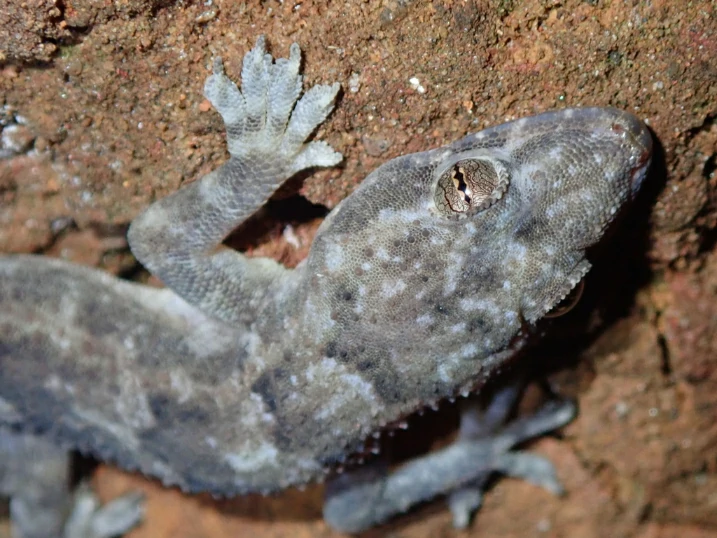If you’ve ever been outside at dusk and noticed geckos darting along walls or hanging near a porch light, you might wonder: do these little climbers eat wasps?
Yes, some geckos do eat wasps, but it’s risky and takes skill. These small reptiles aren’t careless. They rely on speed, precision, and strategy to catch wasps without getting stung. In many environments, wasps are packed with protein, making the risk worth it if the gecko can strike safely.
Why Geckos Hunt Wasps
Wasps are full of protein, fat, and energy that geckos need to survive and stay active, especially in urban or tropical areas where other insects can be scarce.
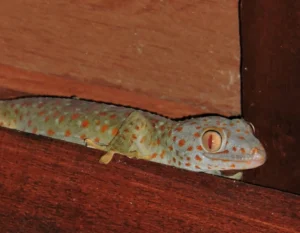
Even though wasps can sting, geckos have evolved to hunt carefully.
A gecko that catches a wasp without getting hurt gains a highly nutritious meal, one other predators might avoid because of the risk.
How Geckos Catch Wasps Without Getting Stung
Geckos use a few tricks to stay safe when hunting wasps:
-
They wait and watch, studying where wasps fly and land.
-
They strike fast, aiming for the body rather than wings or tail.
-
Many go after wasps when they’re less active, like in the evening when the air is cooler.
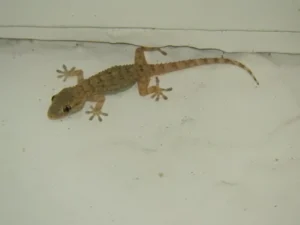
Timing is very important. A gecko may sit still for minutes, waiting for the perfect moment, then lunge with lightning speed to catch its prey.
How Geckos Hunt Wasps
Catching a wasp isn’t like chasing a moth. It takes patience and careful planning.
Geckos creep along walls or ceilings, tilting their heads, watching the wasp, and calculating exactly when to pounce.
Once they strike, geckos clamp down on the wasp with their mouth. Sometimes they shake it a little to make sure it can’t sting before swallowing it whole.
The precision is impressive, especially considering their tiny size and the danger involved.
Do All Geckos Eat Wasps?
No. Only certain species try to eat wasps, usually ones that are bigger or more confident hunters.
-
House geckos often go after wasps drawn to indoor lights.
-
Tropical day geckos may hunt wasps that settle on flowers or leaves.
-
Smaller geckos usually avoid wasps, sticking to safer insects like ants, crickets, or moths.
Even for geckos that do eat wasps, it’s considered a high-risk, high-reward prey choice.
How Baby Geckos Learn to Hunt Dangerous Insects
Young geckos start with small, harmless insects. As they grow, they are gradually exposed to trickier prey.
They may watch older geckos hunt or try small wasps and bees in safer conditions.
Early encounters teach caution and help them develop reflexes to avoid stings.
Over time, they learn the exact moment and angle to strike, making hunting high-value prey much safer.
Hunting Wasps Is Risky For Geckos
Even careful hunting can lead to stings. A sting can cause pain, swelling, or temporary paralysis, but geckos’ small size and fast metabolism often allow them to survive venom that would harm bigger predators.
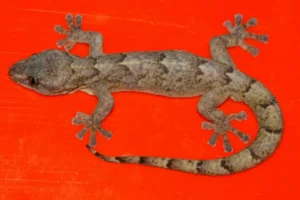
Some geckos strike, retreat, and wait a few seconds before eating the wasp.
This cautious approach lowers risk while still letting them enjoy a nutritious meal.
How Geckos Digest Wasps
After catching a wasp, a gecko swallows it whole. Their digestive system neutralizes the venom, and the insect gives protein and fat to fuel the gecko’s energy.
A single wasp can keep a gecko active for hours, making careful hunting worthwhile.
Wasps are especially useful in urban or tropical areas where protein sources can be limited or seasonal.
How Wasps Fit Into a Gecko’s Diet
Wasps aren’t a main food source. Geckos usually eat a mix of insects like moths, crickets, beetles, ants, and flies.
Wasps are an occasional treat, giving extra protein and energy when other prey is scarce or the chance is perfect.
This shows how geckos adapt to their surroundings, taking advantage of whatever food is available, even if it’s risky.
Hunting Around Artificial Light
Wasps are attracted to light at night, and geckos know this. They perch near windows, lamps, or porch lights, waiting for wasps to slow down or land.
Here, geckos can strike quickly, often with minimal risk.
This behavior shows geckos’ adaptability, using human activity to their advantage while still relying on their natural instincts.
Seasonal and Environmental Factors
The number of wasps changes with season and environment.
-
In tropical areas, wasps are more common in warmer months, giving geckos more chances to hunt.
-
In cities, geckos take advantage of lights where wasps gather.
-
During cooler times, geckos may hunt less or focus on slower, safer insects.
Geckos adjust their hunting to balance risk, reward, and available prey.
Watching Gecko and Wasp Interactions
Seeing a gecko strike a wasp is like watching a tiny, high-stakes game. The gecko freezes, studies its prey, then moves with lightning speed.
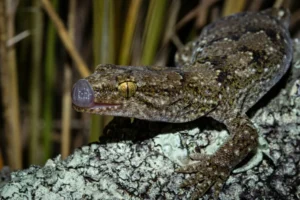
Sometimes the wasp escapes, zig-zagging away, and the gecko quickly recalculates.
This shows impressive reflexes, intelligence, and adaptability in such a small animal.
Benefits of Eating Wasps
Eating wasps is risky, but it gives geckos:
-
Protein for muscle growth and energy
-
Fat for sustained activity
-
Hydration from the insect’s body fluids
Even small wasps provide concentrated nutrients that can make a big difference, especially when other prey is limited.
Why Geckos Are Selective About Wasps
Geckos rarely go after the biggest or most aggressive wasps. They focus on smaller, slower, or distracted ones.
This lowers risk while still giving a high-value meal.
It shows geckos instinctively understand their environment and the danger of their prey.
Frequently Asked Questions
Do geckos get stung by wasps? Yes, geckos can get stung by wasps, but it’s not common. They usually hunt at night when wasps aren’t active. Still, if a gecko disturbs a nest or tries to eat a wasp, it can get stung, and for smaller geckos, that sting can be painful or even dangerous.
Conclusion
Some geckos do eat wasps, but it’s a careful, calculated process. These little hunters use speed, precision, and patience to catch venomous insects without getting stung.
Wasps give high protein and fat, making them a rewarding but risky addition to a gecko’s diet.
Watching a gecko hunt a wasp is like seeing a tiny predator play a high-stakes game. It’s a clear reminder of their smarts, adaptability, and survival instincts.
Geckos handle danger, seize opportunities, and thrive, showing even the smallest creatures can be skilled hunters.
Hi, my name is Ezra Mushala, i have been interested animals all my life. I am the main author and editor here at snakeinformer.com.

